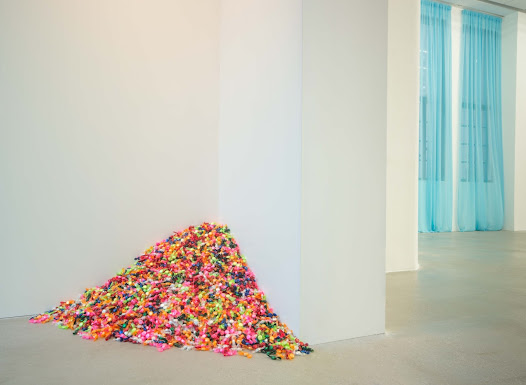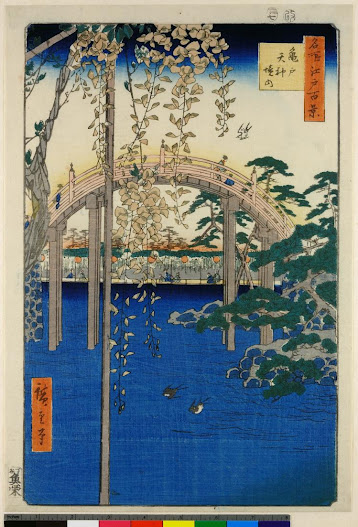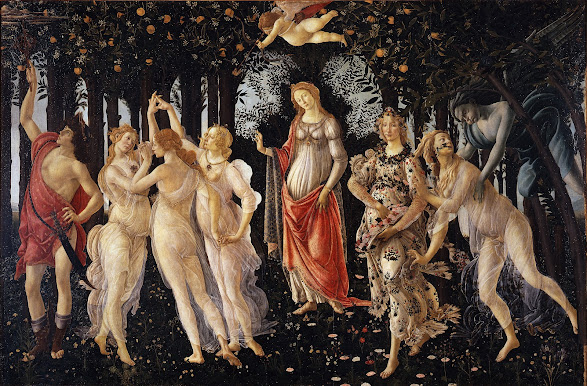The AIDS epidemic was first reported as of June 5th, 1981. Little was known about the disease and severity of it at the time, but it would soon become a wide spread and isolating condition. AIDS stands for Acquired Immunodeficiency Syndrome. It is a life threatening disease evolved from contracting HIV, Human Immunodeficiency Virus. If HIV is left untreated, it can become AIDS. AIDS was prominently seen within LGBTQ+ men, especially young men. These groups had a higher risk of contracting the disease, and due to the lack of acceptance of LGBTQ+ people during this time period, this led to even more ostricization for many gay and bisexual men. Below we will see works of art from 3 different artists, some that lived and died with AIDS and others that witnessed the effects of the disease on the people around them.
Above we see a work of art by Felix Gonzalez-Torres, Untitled (Portrait of Ross in L.A.). This work was done in 1991. This installation is housed in the Art Institute of Chicago. Gonzalez-Torres based this work off of his lover, Ross Laycock's death from AIDS. The candy pile is supposed to represent the physical depletion of Laycock's body as the disease overtook him. The installation actually allows you to take a piece of candy, which in a sense, would cause the taker to be the disease, stealing a piece of Laycock's health. Some say the candy may also be used to represent the AZT, the drug used to treat AIDS in the 80's. The bright, cheery colors of the candy contrast the gloomy idea behind the subject matter. This exhibit is very unique, and heartbreaking as well. To have something as insignificant as candy represent the death of a loved one, makes me reevaluate what I take for granted, such as a healthy, functioning body.
Again, we see another work of art by Felix Gonzalez-Torres, Untitled (It's just a matter of time). This work was done in 1992. There were multiple of these billboards displayed in different countries, translated to the languages spoken there. Though the languages may have differed, the font, color, and message stayed the same. During a time period when AIDS was killing people, and there was still extreme prejudice and alienation towards the patients, the artist's message here seems straightforward. The phrase used is hopeless, implying imminent death. The typeface used is gothic, which is supposedly what was used by the German Nazi's- linking this work to death even moreso. The use of inky black as the background also feels inescapable, like an abyss. The work reeks of gloom, and I think that is exactly what the artist and the gay community were experiencing during this time. Felix died 4 years after this, at age 38, from AIDS related illness.
Above we see art work by David Wojnarowicz, Das Reingold: New York Schism. This work was done in 1987. During this time period, ACTUP (Aids Coalition to Unleash Power), was gaining tread. This group was protesting the government turning a blind eye to the AIDS crisis, as well as the pharmaceutical companies profiteering off the medication needed by patients. Wojnarowicz's work here is reference to the opera Das Rheingold, which was about how the holder of a magical ring would gain the power to rule the world, but only upon the condition that they give up love. I think the the act of renouncing love feels very synonymous with how gay men had to react with the ever present threat of contracting AIDS. As with any virus, limiting potential exposure was likely on everybody's minds, especially those in more susceptible groups. The art style here feels like a warning. The red outlines of faces feels lifeless and unnerving. Behind we see what looks like cells, sperm, and possibly virus. It feels like they are infiltrating and eating away at the faces, leaving a "shell" of the men.
Another work by David Wojnarowicz, Untitled (Hujar Dead). This work was done from 1988-1989. During this time period the government had still not prioritized addressing and fighting the spread of AIDS. Homophobia played a major role in the government's unwillingness to provide assistance to those dying, due to a large majority of AIDS patients being gay and the general publics view being unsupportive of LGBTQ+'s rights. At this point in time, Wojnarowicz had now been diagnosed with AIDS, and his anger towards the government is clear through this work of art. In this work we see 9 photos centered under the overlay of a news article condemning support towards AIDS patients. The 9 photos are ones that Wojnarowicz took of fellow artist, Peter Hujar, after he died of AIDS related complications. Bordering these photos is money and the use of sperm that we see show up in many of his other works. Obviously, this work is very unique, considering not many people take pictures of their friends after they die, especially to showcase among their artwork. However, that is exactly why this image is so horrifying. It's scary, which is exactly what this epidemic was for people. More importantly, it is a shout from the rooftop, a conversation piece, something to get people talking. Hope to get real help and attention from the government.

Another work by David Wojnarowicz, Untitled, from the Sex Series (For Marion Scemama). This work was done in 1989. This work was one of the first that the artist made after Peter Hujar's death, as well as his own diagnosis of AIDS. Here we see overlayed news stories and little circles, including microscopic images of blood cells, newsprint detailing account of homophobic attacks, and pornographic pictures. Wojnarowicz own account of the images, “It came out of loss,” he said. “I mean every time I opened a magazine there was the face of somebody else who died. It was so overwhelming and there was this huge backlash about sex, even within the activist community. . . . And it essentially came out of wanting some sexy images on the wall—for me. To keep me company. To make me feel better.” I can't help but feel the artists dread in this work, the burden he must carry after watching his friend die and then finding out he may die from the exact same thing. This work is dreary and worn out. I see the same protest but I don't see the same energy in this work as in those previous to the double whammy that Wojnarowicz had taken in his personal life. Only 3 years later, in 1992, David Wojnarowicz died at age 37, due to AIDS related complications.
The above artwork is by Masami Teraoka, American Kabuki (Oishiiwa). It was done in 1986. Unlike the previous two artists, Teraoka himself did not experience AIDS, but used his art form as a way to universalize the epidemic. A friend of Teraoka confided in him that her infant child had contracted AIDS through a blood transfusion. Being that AIDS was so stigmatized due to it largely being gay men that got HIV, this opened up an oppurtunity for Teraoka to rewrite the narrative. Here we see a mother desperately clutching her child. She looks frantic and sickly. The green around her eyes and the sores on her arms and face, as well as the blackened teeth suggest she is ill and likely suffering from AIDS. The waves of the water look like they are pulling her in. The motion and distress conveyed through this work makes me believe she does not have much time left. I think this work is beautiful and quite eery.
I chose this theme to educate myself on the epidemic. I have always heard about the AIDS epidemic mentioned briefly and then glazed over in school, but I was never immersed in the reality of the stark situation that many of these individuals faced. I think the topic is very sad, especially considering that the government failed so incredibly to provide information, resources, and sympathy to an already disadvantaged community. I think all of these works are so unique and obviously very politically and emotionally charged. Because of that strong emotional aspect, I think it allowed me to not only have a better understanding of the history and topic but also empathize with the community affected so deeply. I think when artwork feels so raw and emotional, it makes it harder to digest, and I think that is why I was drawn to many of these pieces.
Bibliography
Emma Acker at the Fine Arts Museums of San Francisco and Dr. Steven Zucker, "Masami Teraoka, American Kabuki," in Smarthistory, February 12, 2019, accessed April 18, 2024, https://smarthistory.org/american-kabuki/.
Dr. Thomas Folland, "Felix Gonzalez-Torres, “Untitled” (billboard of an empty bed)," in Smarthistory, August 9, 2015, accessed April 18, 2024, https://smarthistory.org/felix-gonzalez-torres-untitled-billboard-of-an-empty-bed/.
"DAVID WOJNAROWICZ: HISTORY KEEPS ME AWAKE AT NIGHT" in Whitney Museum of American Art, accessed April 19, 2024, https://whitney.org/exhibitions/david-wojnarowicz?section=9&subsection=7.
Lisa Cisneros, "40 Years of AIDS: A Timeline of the Epidemic", in University of California San Francisco, June 4, 2021, accessed April 19, 2024, https://www.ucsf.edu/news/2021/06/420686/40-years-aids-timeline-epidemic.
"A Timeline of HIV and AIDS", in HIV.gov, accessed April 19, 2024, https://www.hiv.gov/hiv-basics/overview/history/hiv-and-aids-timeline#year-1986.








The AIDS theme of your blog was really interesting and impactful. Although all of the artworks presented made a sociopolitical statement and delivered a message of the medical effect of the disease on the victims and tackled the highly controversial topic at the time- my favorite artwork is Untitled (Portrait of Ross in L.A.) by Felix Gonzalez-Torres. The artist was born in Cuba in 1957. He lost his life to AIDS in 1996. His art installation Untitled (Portrait of Ross in L.A.) is unique since it doesn't focus on a person's appearance but instead presents the physicality and weight of the person in a very unconventional way. There are so many different layers to different perspectives that the author confronts the public with. The public was encouraged to engage with the artwork in obtaining a piece of candy, so the installation was reduced, presenting Ross's weight loss during his battle with AIDS.
ReplyDeleteAll of the presented artworks were nicely tied in with the AIDS theme.
The art perfect weight of the art installation Untitled (Portrait of Ross in L.A.) by Felix Gonzalez-Torres is 175 pounds, which was Ross's exact weight before he contracted AIDS. The installation would be refilled after the daily reduction of candy.
The theme you chose really interested me, it is not a theme that i would think of doing. It is interesting to see how different people procieved aids into their artwork because each is so widely different. Usually during an epidemic artwork is very similar. The sign by Felix that says "its just a matter of time" really captured me because that could mean anything to anyone but i feel as though during that time it meant will the Aids get to me and take over. Good job fitting a the theme and educating yourself on something that you wanted to learn!
ReplyDeleteYour theme is really interesting, I had a hard time picking out what I was going to do. I really like the two artworks by Felix Gonzalez-Torres because they both have meaningful meanings behind them, especially with AIDS. When I read the first artwork, it was really interesting to know that the installation allows anyone to take the candy, but I wouldn't have it means taking away a heath piece by piece. Which gets me to the second artwork that just describes from the first artwork, "It's just a Matter of Time" to me is like taking a candy from the pile and each of the candies can be a piece of time from that person until they die.
ReplyDeleteIn "It's just a matter of time", I don't think the link to the Nazis is an attempt to represent just death, but rather an attempt to represent how the neglect from the Reagan Administration regarding the AIDS epidemic is akin to a genocide by itself, drawing parallels between the targeting of homosexuals during the holocaust and and the deliberate neglect of the lives of millions of homosexuals during the AIDS epidemic.
ReplyDeleteThe pile of candy reminds me of the pile of pills someone with HIV or AIDS had to take when this disease was still unknown. The colors really capture you to stare at the large pile. “ Its a matter of time” is such a gloomy sign and feels like the world is coming to an end or maybe even the coming of Jesus. It captures you.
ReplyDelete